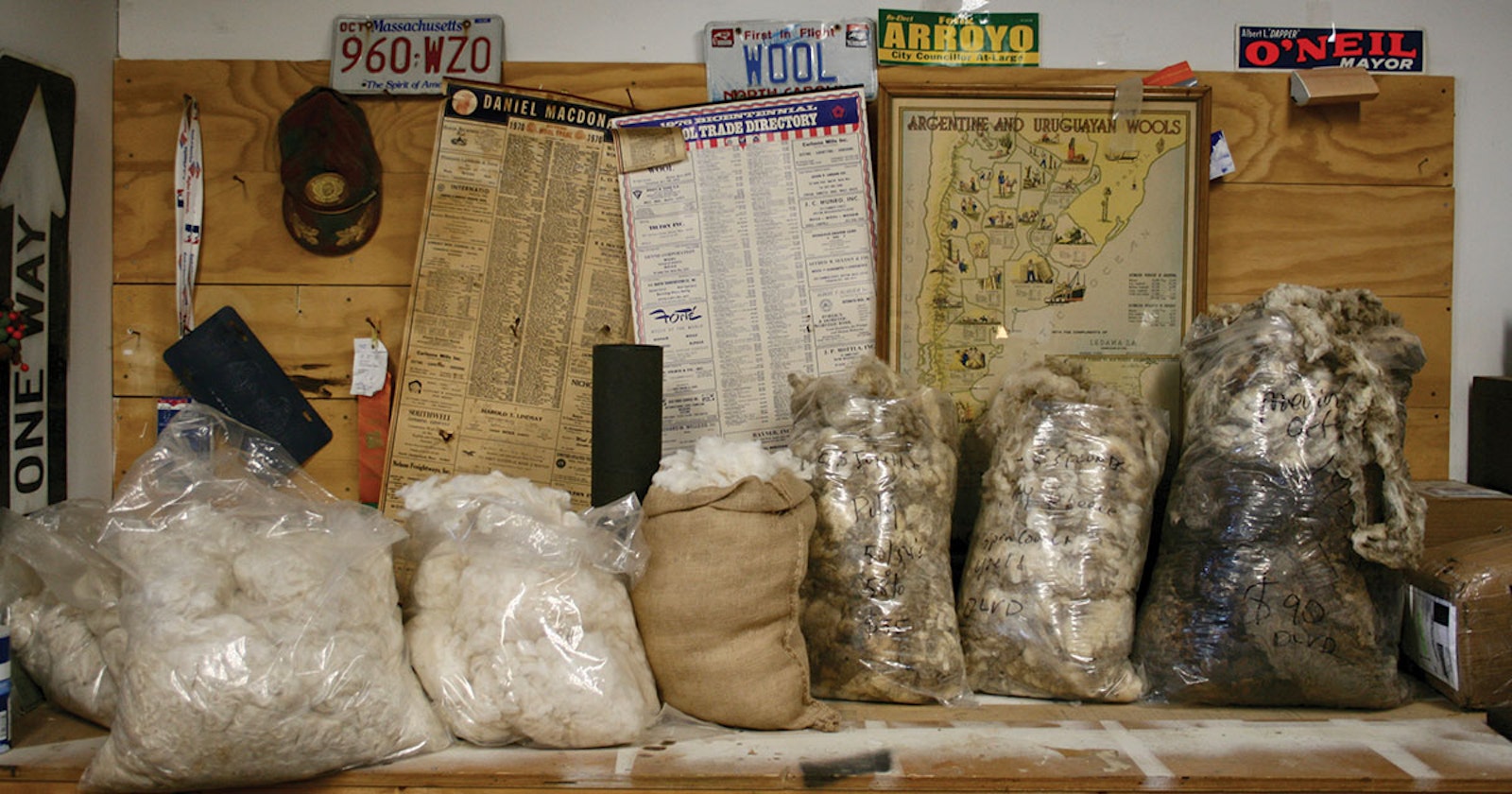With a history in industrial-scale wool supply and a current audience in artisans, descriptions of the types of wool R.H. Lindsay carries include terms that handspinners don’t find anywhere else. The website offers a Wool Glossary with basic terms, and here are some unusual phrases you might also encounter.
Phil Lindsay of the R.H. Lindsay Wool Company has kept his grandfather’s company relevant and is poised to ride a slowly growing wave of interest in American wool.
Tasman Comeback Comeback is a term for a sheep with three-fourths of its genetics from one breed and one-fourth of another. After crossing a Merino sheep with a different breed, the offspring is crossed again with a Merino; that resulting sheep is considered a “comeback” because it has come back toward Merino. “Tasman” refers to Tasmania, a state in Australia that is home to many sheep, including those who grow the wool sold by R.H. Lindsay.
Primitive Wool S/C Primitive wool refers to unimproved breeds, typically dual-coated. When R.H. Lindsay acquires primitive wool, it tends to have matted fleece with a fine undercoat and coarse wool poking through. “S/C” means that the fiber has been scoured and carded.
56s/64s Numbers such as these refer to the Bradford count, a system for measuring the fineness of wool that indicates how many 560-yard hanks of the finest single strand that can theoretically be spun from a pound of wool. The higher the number, the finer the fiber (and the lower the micron count).
Open Top Wool top that has been “broken” or pulled apart after combing. Used for batting or woolen yarn, the fiber is free of vegetable matter and is useful to quilters.
Scoured Pieces Pieces are sections of wool that are sorted from the main fleece. Before rolling and packing the prime fleece, a wool classer will throw the fleece onto a skirting table and pull off the belly and heavy edges, which become the “pieces.” Pieces are typically stained and contain vegetable matter and dirt—that sounds unappealing, but Phil had some carded into sliver that he likes.
Shearer’s Choice Not a technical term, this is a batch of wool that two shearers collected and brought to R.H. Lindsay. Dorset/Polypay wool is currently available as scoured wool or carded sliver.
A skirting table in the office allows for sorting and examining wool any time. Behind the table hangs an enormous felted panel from the dragon yurt that has graced the R.H. Lindsay booth at Convergence on two occasions.
Fleece State Scoured Wool The fleece states include the states east of the Mississippi and the northern Plains states that are part of the Mississippi River Valley. Other types of wool in the United States include Territory Wool (from mountain states including Oregon, Washington, Arizona, and New Mexico), California Wool, and Texas Wool (obvious). R.H. Lindsay has historically done most of its business in the fleece states, although Phil says, “My father was a registered warehouseman in Texas once, and he certainly would travel the entire country buying wool, often competing against the same people he’d turn and sell the lot to after the sale. (That's another story about my dad’s unmatched skill in subjectively evaluating wool.)”
— Julia Farwell-Clay
Julia Farwell-Clay knits, teaches, and writes about wool from her home base in Concord, Massachusetts.
Download the Fall 2018 issue ofSpin Off_ to read the rest of Julia Farwell-Clay’s article, “The Curious and Adventurous Mr. Lindsay.”_
Featured Image: Above the bench in the company’s shipping department hang maps and tables related to wool. Photos by Julia Farwell-Clay
Learn more about all types of wool!



